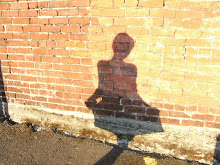Four major claims stood out to me in Virginia Postrel’s “Aesthetic Imperative.” Posteral argues that Americans’ move toward a heightened aesthetic sensitivity is not only a natural thing, but a good thing. Because the desire for function still comes first , paying attention to how something looks—and basing one’s purchase only partly upon it—is nothing to be ashamed of. In fact, it is just another form of self-expression. Humans innately enjoy tactile and visual responses to things, explains Posteral. “The look and feel of things tap deep human instincts.” She bases this first claim on accepting that it’s fun and gratifying to shape one’s world in a unique way.
Part of the reason for some people’s concerns about aesthetic proliferation may lie in another of Posteral’s claims: aesthetics permeate more areas of everyday life than it once did. Consumers and customers demand aesthetic quality; industries once only focused on innovative function have now turned an equal devotion to form. Design is moving from the abstract to the personal , explains Posteral. Art is now accessible to the population as a whole, not just the elite few which opens up a creative possibility for anybody. Posteral notes one political writer living in Washington D.C. who now pays more attention to clothing—and likes it. “It’s another way of saying every day is special,” she quotes his explanation.
From Posteral’s examples and arguments, it is clear she feels aesthetics are distinctly personal and the resulting preferences culturally based. Citing one grocery shopper’s sentiment that the addition of a Starbucks—which is obviously a major cultural and even status symbol—is the “crowning glory” of a new supermarket
exemplifies this claim. Alone, out of context and without the eye of a beholder, the image means nothing. We make sense of it as situated beings within a specific ideology.
Range of Warrants:
Substantive: Posteral uses disassociation throughout her arguments. She lays out what, say, the trend of increased aesthetics doesn’t mean and transitions to what it does mean: “The issue is not what style is used but rather that style is used […] even in areas where function used to stand alone.”
Ethos/Authoritative: Posteral’s voice is not condescending. Rather, she is very optimistic about the presence of an increased aesthetic in everyday life. Her examples are not those of frustrated individuals overwhelmed by a world overflowing with too many choices, but of people whose lives are enriched and made fun by increased option. She also adds some critique: our society is trained to be skeptical of aesthetic importance, or of something too flashy overshadowing a deeper importance or underlying message. However, she gives the eye more credibility than that: “But the eye’s mind is identifying something genuinely valuable.” We know how to tell when something lacks importance. Also, she backs up her arguments with a deeper discussion of “aesthetic,” drawing on people from the field of design, questioning the science of perception, and beauty.
Motivational: Again, Posteral gives Americans more credit than some critics of a world dominated by aesthetic. More options doesn’t mean people will inevitably become lost, indecisive, apathetic. Rather, they are embracing the shift toward a designed functionality.
My Response:
I love the visual and I love the tactile, I readily admit. I am fascinated by human expression in all of its forms. Design is a constant and endless well of inspiration and relief from frustration. I think there is a lot to be said about the importance of aesthetic in people’s lives. However, in the same breath I wonder at whose expense those in the privileged position of “consumer” {and here I mean monetarily privileged} consume. There is an often-overlooked line between excess and restraint. America has taken on the lovely image of a country in excess; consumerism undeniably persists, functioning as the motive du jour behind most decisions—both professional and personal. So yes, I do think aesthetic is a good thing—but only to the fullest extent of fine and meditative selection. Moving quickly from one design to the next only creates more waste and encourages dissatisfaction—a personality trait that can migrate into other realms of society, relationships being the most dangerous. Instead, be a curator in your own life’s museum of personality.

No comments:
Post a Comment